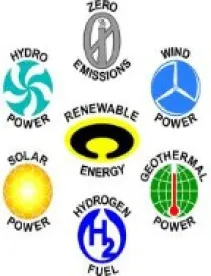On December 20, 2017, the U.S. House of Representatives voted to send the Tax Cuts and Jobs Act (the “Act”) to the president for his signature, which is the final step required to make the Act effective. What does the final bill mean for the renewable energy industry? The Investment Tax Credit (“ITC”) and the Production Tax Credit (“PTC”) appear to remain unchanged (for now) and the Base Erosion and Anti-Abuse Tax (aka, the BEAT or International AMT) in the final version of the Act is better for the renewables industry than in previous iterations. Nevertheless, a handful of other provisions may significantly impact the renewable energy industry.
The ITC and PTC Have Not (Yet) Been Changed
Unlike the bill that was passed in the House of Representatives in November, the Act passed on December 20 does not alter either the ITC or PTC. While the Act also does not address certain “orphan” technologies, e.g., fuel cell, geothermal, and small wind projects, later on December 20, Senate Finance Chairman Orrin Hatch introduced a tax “extenders” bill that would renew and extend qualification for the ITC of such “orphan” technologies. At present, there have been no announcements from the Senate Finance Committee as to timing, but some observers anticipate that the extenders bill will not be voted on until January.
But Investment in Renewable Projects May Soften, Especially by Multinational Banks
Assuming that the president signs the Act, the U.S. maximum federal corporate income tax rate will be reduced to 21%. This reduction will generally increase returns to investors on operating projects but will also generally reduce the value of the PTC and ITC in that investors will not need as many credits to reduce their final tax bill. In addition, the reduction may extend flip date calculations that do not assume a fixed income tax rate. While the Act will also eliminate the corporate alternative minimum tax, this change should not affect investor credit appetite.
The Act also brings back 100% bonus depreciation deductions — for a time. Although subject to certain restrictions, the new version of 100% bonus depreciation will be available for qualified property placed in service prior to 2023. Bonus depreciation will also be available at steadily reducing rates for qualified property placed in service through 2026. Like the reduced corporate income tax rate, bonus depreciation may increase returns to investors, but in the last several years, many of the larger investors have elected out of bonus depreciation, indicating that this provision may have limited effect in some portions of the renewables industry. In addition, the new limitations on net operating loss deductions may cause some investors to more carefully assess their appetite for depreciation deductions.
However, the Act also includes several provisions that may hurt some investors.
-
New interest deduction limitations may result in more projects needing to be funded with less debt and more equity. While the ratio of debt-to-equity financing has always been a project-by-project and investor-by-investor decision, this provision will almost certainly change that analysis and may result in fewer projects being funded if more equity per investment is needed.
-
The change from a worldwide to a semi-territorial system of taxation may have detrimental effects for some investors (and some developers) that use a multinational corporate group structure.
-
In addition to the new general interest deduction limitations, interest and certain other payments to offshore affiliates will also be subject to deduction limitations under the Act.
-
The mandatory repatriation of certain offshore earnings that have been left in non-U.S. holding companies by many U.S. corporations may also cause some of the largest tax equity and strategic investors to reconsider their historical methods of funding renewables investments.
-
However, going forward, U.S. corporations will generally be permitted to deduct dividends received from 10% owned non-U.S. subsidiaries.
-
-
The consequences of the International AMT are complicated.
-
As we reported on our Global Power Law and Policy blog last week, the International AMT provision in the Act sent to the president is better for the renewables industry than the provision which appeared in prior versions. Specifically, a U.S. corporation that is subject to the International AMT will be permitted to use up to the lesser of 80% of (a) the PTCs and ITCs available to them or (b) the “base erosion minimum tax amount,” i.e., the minimum amount of tax otherwise due under the International AMT provision.
-
However, one of the key thresholds for determining when a U.S. corporation becomes subject to the International AMT was reduced from 4% to 3% (2% in the case of banks and registered securities dealers) of deductible payments made to non-U.S. affiliates compared to total deductible payments. Some of the investors who had determined that they may not be subject to the International AMT (or could prevent exposure to it) have backed off their prior statements and indicated anew that this provision may cause problems for them. That said, there are many other investors that appear to be unfazed by the International AMT.
-
Under current law, taxpayers are able in many cases to receive prepayments of amounts for goods and services but only recognize such amounts as income as the goods or services are delivered. The Act limits the ability of accrual basis taxpayers to defer recognizing income in respect of such prepayments. This will limit the ability to finance energy facilities with prepaid power purchase agreements.
-
Developers May Have a Nice Holiday Surprise
Renewables developers will generally be subject to the same benefits and drawbacks described above with respect to investors. However, at tax time, the typical domestic developer organized as a corporation will be most focused on the reduction in the corporate income tax rate, new restrictions on the use of net operating losses, and — for those developers that retain an interest in renewables projects — the continued availability of the PTC and ITC and the new 100% bonus depreciation.
-
In addition, all developers should, of course, consider the effect of the Act on investors and how they may impact the value of projects currently under construction, the fair market value of projects that will soon be subject to a purchase option, how much debt a project can tolerate without running up against the new interest deduction limitations, and how to make their projects more attractive to a potentially smaller pool of investors.
-
Another consideration when seeking sources of financing for projects is that the Act eliminates Clean Renewable Energy Bonds (“CREBs”).
For those domestic renewables developers that are organized as pass-throughs, i.e., S corporations and limited liability companies (“LLC”) treated as partnerships for U.S. federal income tax purposes, or those that can be tax-efficiently converted to a pass-through, there is another valuable tool in the Act.
-
Assuming the president signs the Act, individuals who own equity in a pass-through should be able to benefit from the pass-through deduction, sometimes called the “Super 199” deduction.
-
Although the calculations for this provision are extremely complicated and likely to yield slightly different results for equity owners of S corporations and partnerships, the general idea is that any taxpayer other than a corporation will be permitted to deduct up to 20% of the qualified business income (“QBI”) derived from any qualified trade or business (“QTB”) of the taxpayer. There are a lot of limitations on what constitutes QBI or a QTB, but net income (less reasonable compensation to the taxpayer if the taxpayer works for the business) from the sale of inventory (e.g., solar or wind facilities) should qualify.
It is important to note that the pass-through deduction is not necessarily equal to 20% of QBI.
-
In some cases, the deductible amount will be less, for example, because 20% of QBI is more than 20% of the taxpayer’s taxable income (after certain adjustments) or because the QTB pays a relatively small amount of W-2 wages.
-
In limited situations, the pass-through deduction could be more than 20% of QBI. For example, noncorporate taxpayers who invest in real estate investment trusts and publicly traded partnerships taxed as partnerships (e.g., some of the large oil and gas publicly traded entities) may be able to also deduct 20% of certain types of income earned from those investments.
Nonetheless, individuals who own equity in a pass-through should also remember that even though the Act increased the thresholds applicable to the individual alternative minimum tax (“AMT”), the AMT may still apply to them.
What Now?
As noted above, the Act has been sent to the president for signature. While he could sign the Act (thus making it effective as of the various dates specified in the Act) at any time, it is possible that he will not sign it until on or after January 1, 2018, in order to postpone the application of certain federal sequestration rules until 2019. In addition, as noted above, the much-rumored extenders bill has now been introduced. That bill is not subject to the same mathematical constraints that the Act is and, thus far, appears to be fairly uncontroversial. Nonetheless, as indicated above, some observers anticipate that it will not be voted on until January, which leaves plenty of time to try to squeeze in an extension of the CREBs.




 />i
/>i

